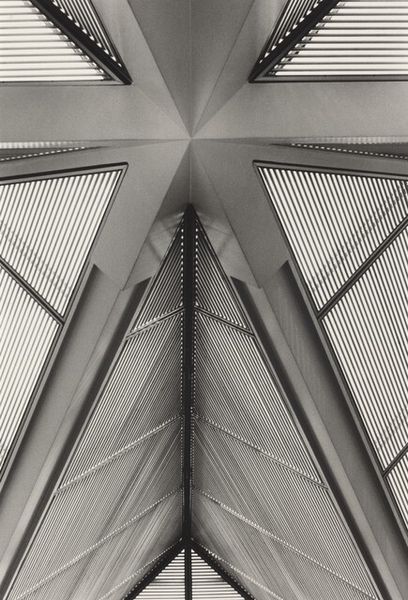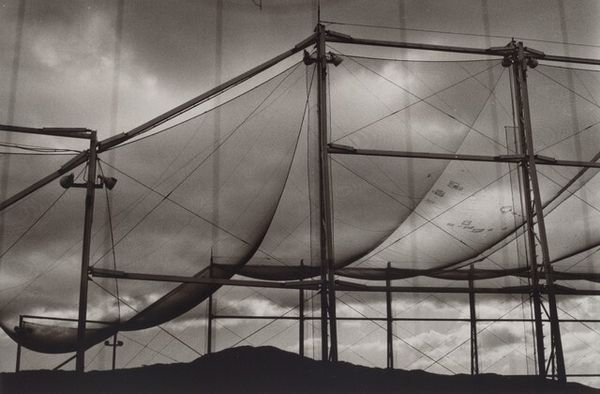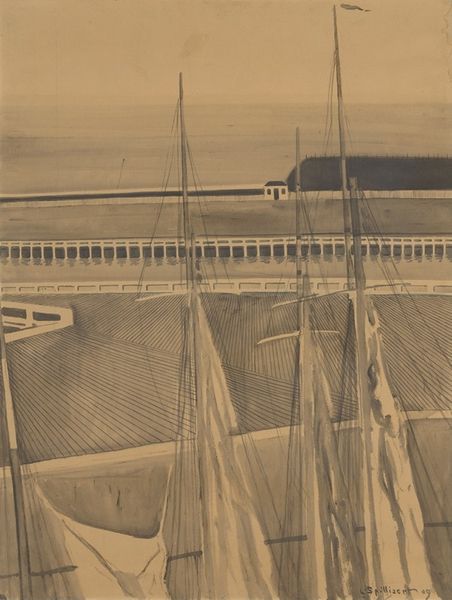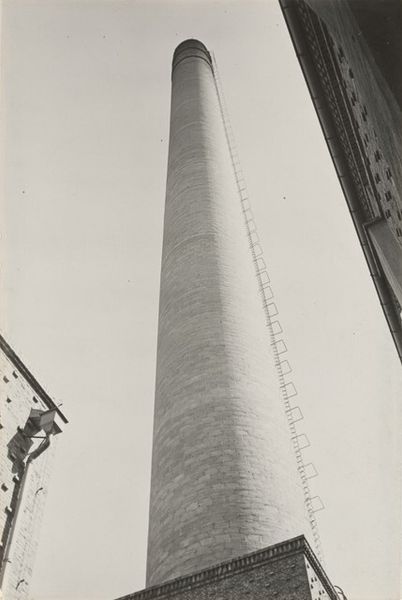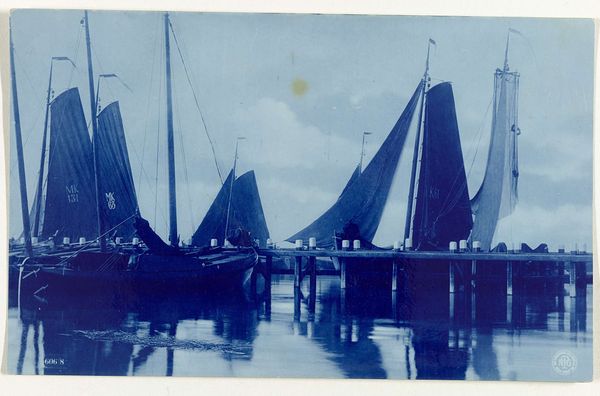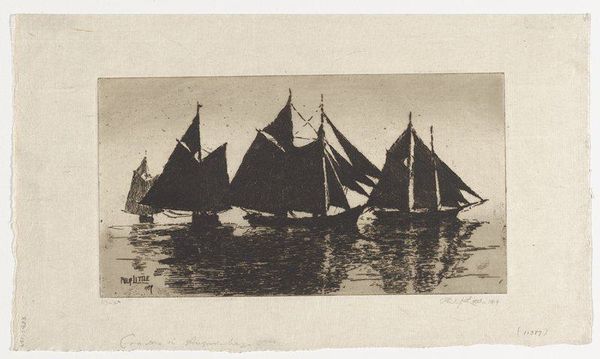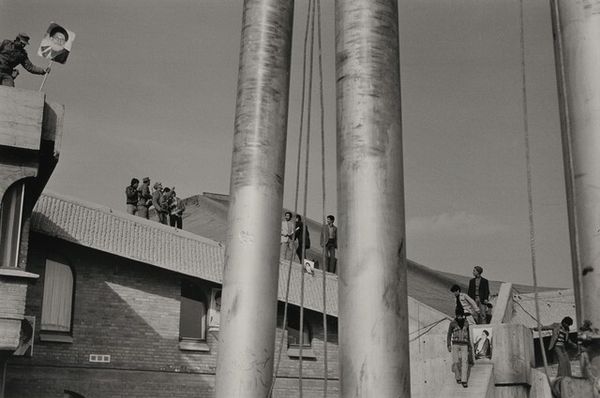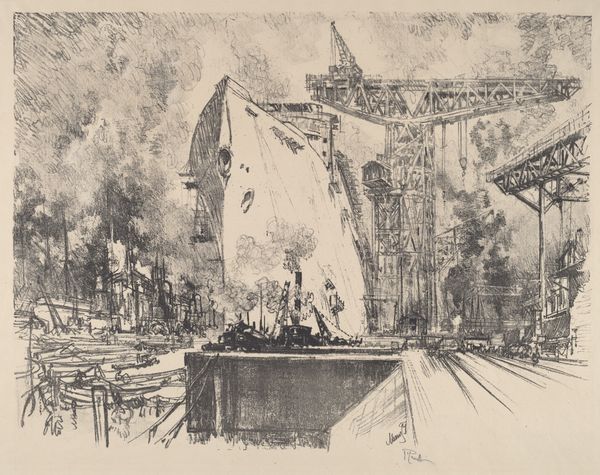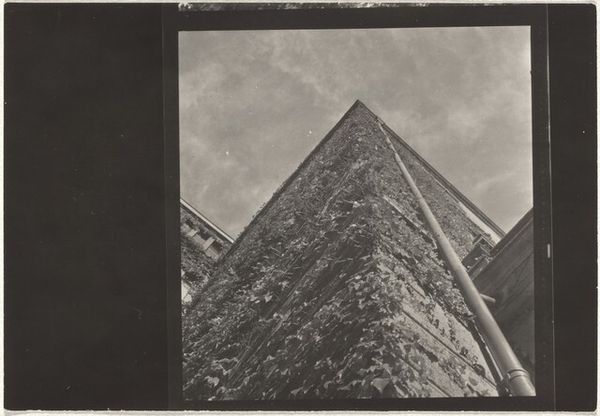
photography, site-specific, architecture
#
sky
#
black and white photography
#
cool tone monochrome
#
sculpture
#
black and white format
#
b w
#
photography
#
black and white theme
#
black and white
#
site-specific
#
monochrome photography
#
international-gothic
#
monochrome
#
architecture
#
monochrome
Copyright: Le Corbusier,Fair Use
Curator: At first glance, this strikes me as a cathedral reaching for the heavens, almost painfully sharp. Editor: This is a photograph of the Phillips Pavilion, which Le Corbusier designed for the 1958 World’s Fair in Brussels. The Fair's theme that year was "human progress," so this avant-garde structure captured the future in architecture, music, and film. Curator: Well, the photographic rendering emphasizes the stark geometry. The monochrome flattens any subtle gradations in the material, forcing our focus onto the converging lines and planar surfaces. It definitely feels… angular and maybe even austere. Editor: Absolutely. Le Corbusier intended this structure as an immersive experience, pairing it with an electronic music piece by Edgard Varèse, and a film installation by various artists. It represented optimism after war. Curator: But what does it symbolize, though? These towering, almost menacing shapes? Is it supposed to instill awe or, dare I say, fear? The black and white deepens the mystery of meaning and experience. Editor: During the Cold War, modern structures sought to signal progress, innovation, and transcendence in the face of potential global annihilation. Think about its sharp curves and unusual forms as evoking movement and fluidity – challenging static notions of national identity. Curator: Yes, and that soaring height evokes Gothic cathedrals or temples of worship. The structure embodies collective aspirations that reach beyond individual capacity. But I see it in purely formal terms. I cannot see the symbolism past that, but you make an excellent point. Editor: Precisely. By examining symbolic resonances alongside material construction we can understand architecture as not merely a composition, but as cultural expression of humanity’s capacity to aspire towards some idealized future. Curator: Understanding its role at the fair and context allows us to look deeper at both intent and perception. Now I see much more than sharp forms and striking lines. Editor: Likewise. The visual rhetoric reminds us to seek beyond pure design and construction and recognize architecture's deep entanglement with cultural values.
Comments
No comments
Be the first to comment and join the conversation on the ultimate creative platform.

